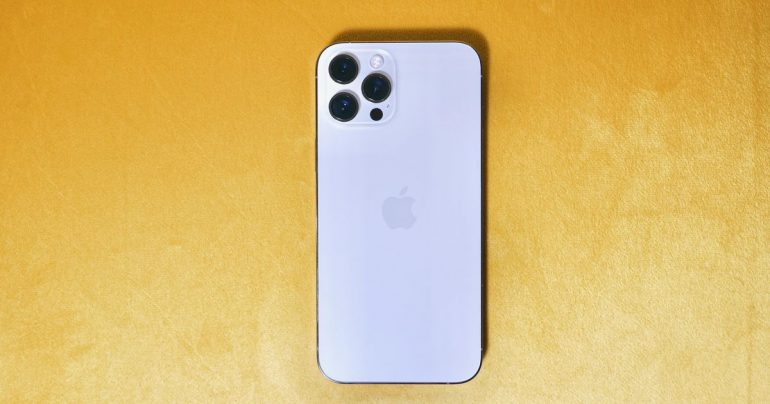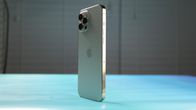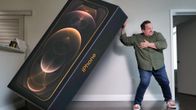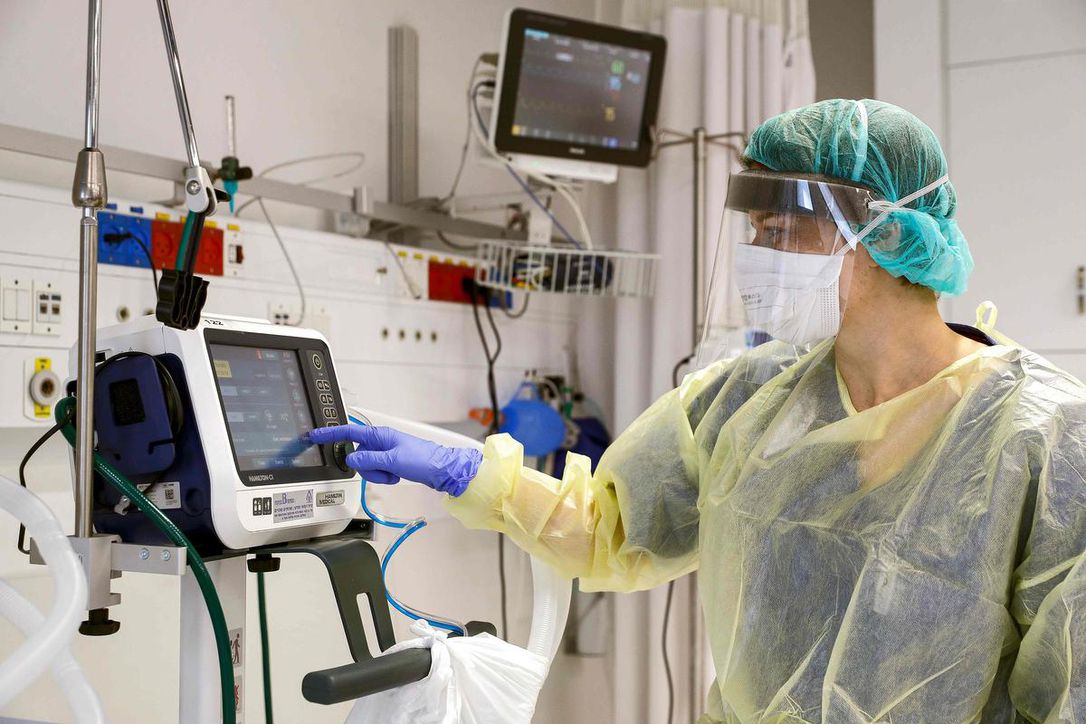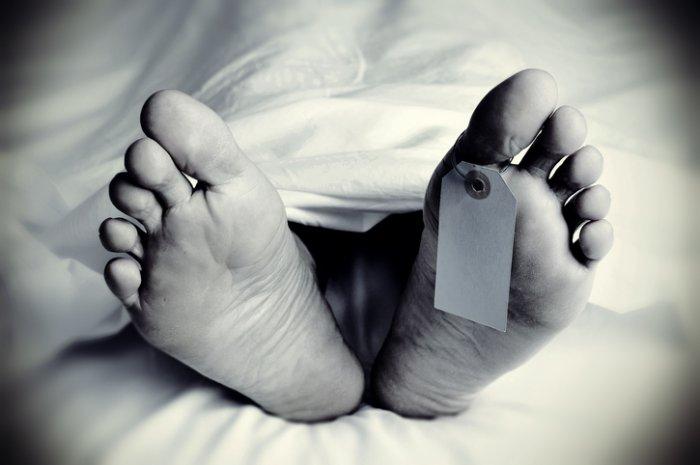
The iPhone 12 Pro Max has the largest screen ever on an iPhone.
Patrick Holland/CNET
The iPhone 12 Pro Max ($1,099 at Amazon) follows in the footsteps of the 7 Plus and gets camera upgrades that none of the other iPhone 12 models have. At its core the iPhone 12 Pro Max, like all the phones in the iPhone 12 family (the iPhone 12, iPhone 12 Pro and iPhone 12 Mini), has a bunch of things going for it like a new flat-sided design reminiscent of the iPhone 5 ($40 at Back Market) and iPad Pro. It has support for 5G, an OLED screen with support for HDR, a ceramic shield covering, an A14 Bionic processor, support for MagSafe wireless charging and it can be submerged to a depth of 6 meters (just under 20 feet) for up to 30 minutes. If you want a deeper assessment of any of these features, take a look at my iPhone 12 and 12 Pro review.
Like
- Premium design and build
- Outstanding cameras
- Great battery life
- 5G support
Don’t Like
- The large camera bump
- The lack of iPadOS-like features
But at a starting price of $1,099 (£1,099, AU$1,849), or a hundred dollars more than the iPhone 12 Pro, this is the question: Are camera upgrades on the 12 Pro Max worth the extra money? The short answer is yes, but not just because of the camera.
If you want the largest screen on any iPhone ever made, the 12 Pro Max is worth the price. If you value having the longest battery life on any iPhone 12, the 12 Pro Max seems like an obvious choice. And yes, if you want to get every last drop of image quality out of your photos and videos, then the iPhone 12 Pro Max is definitely worth it and has earned CNET’s Editors’ Choice.
The iPhone 12 Pro Max has a gigantic screen
Despite being only 2 grams heavier than last year’s 11 Pro Max, the iPhone 12 Pro Max feels even more solid and well-built. The flat edges, the matte-etched glass back and stainless steel sides are another level of premium fit and finish. The review unit I tested was gold, and the polished sides looked like C-3PO on his best day. But make no mistake, this is a big phone. If you dropped it on someone there’s a chance they’d sustain a serious injury.
Defining all this premium bigness is a 6.7-inch OLED screen, which is larger than the 6.5-inch one found on the 11 Pro Max and XS Max ($1,100 at Boost Mobile). The new screen makes the 12 Pro Max a sliver taller and, along with those flat edges, gives the behemoth iPhone a tight robust look.
On the back of this chonky phone is a camera bump that’s thicker than an SD card. When the 12 Pro Max is on its back, there’s a noticeable gap between the phone and the surface it’s on. I realize most people are going to put a case on it, which will level things out.
The 12 Pro Max has the longest telephoto lens found on any iPhone
When Apple announced the iPhone 12 lineup there was a little confusion about which phones had which camera. But here’s how it all breaks down. All four phones have the same ultrawide angle and selfie cameras. All four phones have a faster f1.6 aperture lens on the main wide angle camera. That said, the wide-angle camera on the 12 Pro Max is different, which I’ll get to in a moment. The 12 Pro and 12 Pro Max also have a lidar sensor, which helps with autofocus in low-light for photos, video and slow motion as well as AR apps. Last, both the 12 Pro and 12 Pro Max have a third rear camera with a telephoto lens, but the lens on the 12 Pro Max is longer than the one on the 12 Pro.
At a 65-millimeter equivalent, the new telephoto lens on the 12 Pro Max has a 2.5x optical zoom. Compare that to the 52-millimeter equivalent telephoto lens on the 12 Pro, which has a 2x optical zoom. And that 0.5x extra goes a long way. It’s definitely nowhere close to the 5x optical zoom on the Galaxy Note 20 Ultra, but I was glad to have a little more reach on the iPhone.

On the back of the 12 Pro is a new wide angle camera, a longer telephoto camera, an ultrawide-angle wide and a lidar sensor.
Patrick Holland/CNET
Taking photos where there isn’t a lot of light is a weakness of any camera. And the smaller the camera (like the ones on a phone) the more this weakness is amplified. The cameras on the iPhone 12 Pro Max seem built around the singular goal of taking outstanding photos and videos in medium and low-light situations.
One way Apple has addressed this is to give the main wide-angle camera on the 12 Pro Max a larger sensor. Combined with an f1.6 lens, the new sensor gets an 87% improvement in low-light capability, according to Apple. On paper that’s impressive. To help things further, the 12 Pro Max has sensor-based optical image stabilization instead of the lens-based OIS found on the 12, 12 Mini and 12 Pro. By stabilizing the sensor, Apple claims you gain the equivalent of a stop of light, which again, on paper is impressive.
For the most part, all these claims seem true. The Pro Max takes great photos in low light, but when compared to photos from the regular 12 Pro, the differences don’t jump out at you right away. And that’s less of a strike against the 12 Pro Max, and more of an indication of how good the cameras are on the iPhone 12 Pro. We’ll be going much more in-depth on photos and videos from both phones in an upcoming camera comparison.

This is a Night Mode photo from the 12 Pro Max.
Patrick Holland/CNET
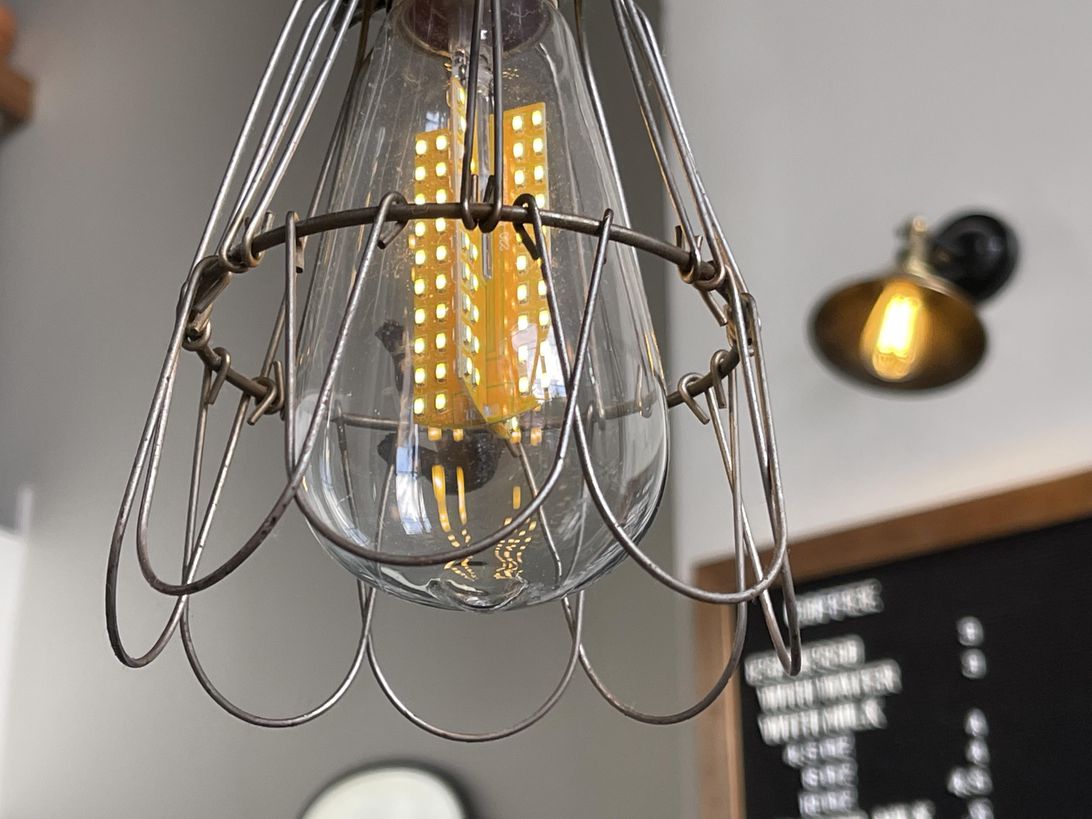
The 2.5x optical zoom creates great natural-looking background blur here in this photo of an LED lamp.
Patrick Holland/CNET

These next three photos were each taken with one of the rear cameras on the 12 Pro Max. This was taken with the main wide-angle camera.
Patrick Holland/CNET

Here is a shot taken with the 2.5x optical zoom on the 12 Pro Max’s telephoto camera. It’s impressive how it handles the backlight of the sun.
Patrick Holland/CNET

And here is the same scene taken with the ultrawide-angle camera. Look at the drama the perspective adds.
Patrick Holland/CNET

Night Mode is now on the wide, ultra-wide and front-facing camera. This is a Night Mode selfie.
Patrick Holland/CNET

This was taken with the phone’s main wide angle camera.
Patrick Holland/CNET
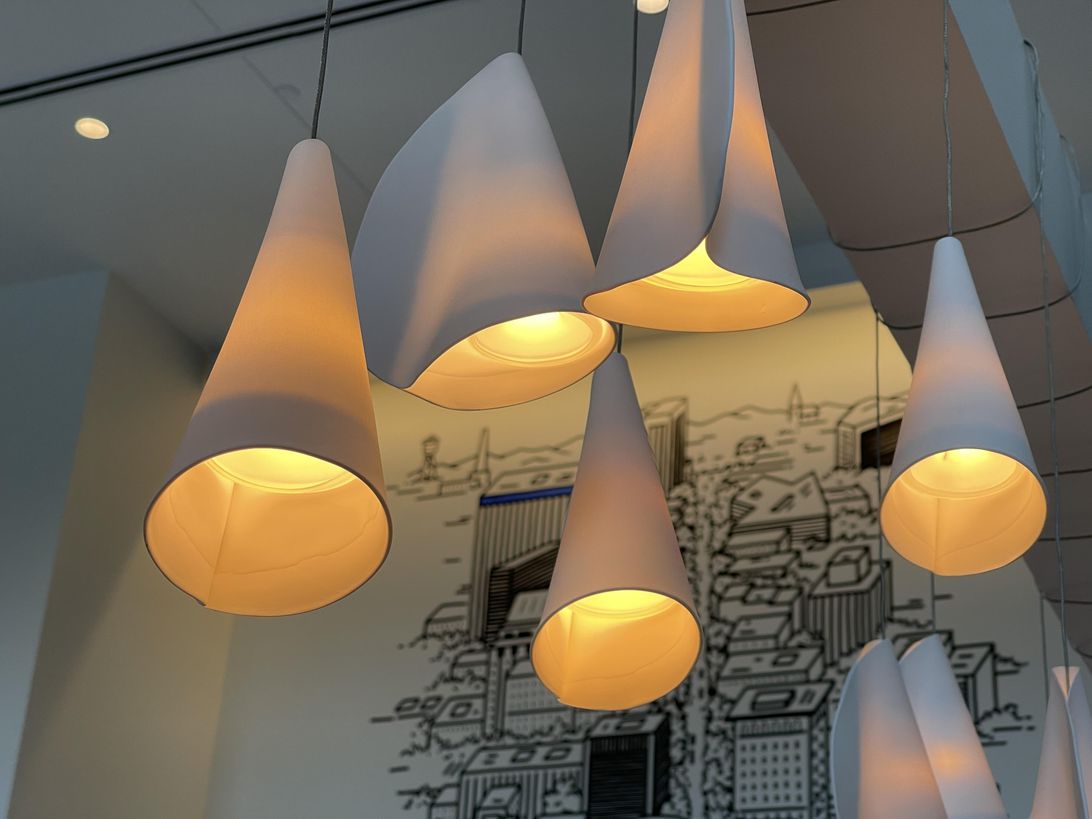
Here are the same lights again at 2.5x.
Patrick Holland/CNET
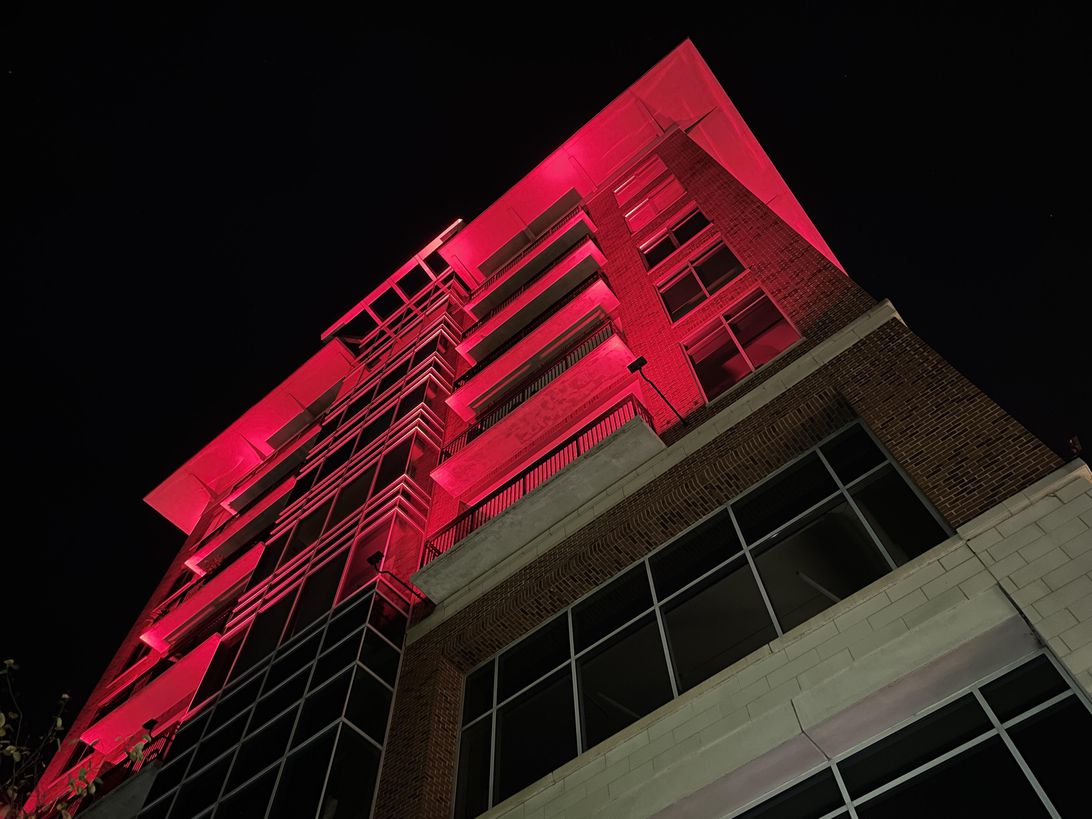
Here is another Night Mode shot taken with the 12 Pro Max.
Patrick Holland/CNET

This was taken indoors with mixed lighting on the main camera. The white balance looks a bit off.
Patrick Holland/CNET

This photo of a building at sunset was taken at 5x digital zoom.
Patrick Holland/CNET
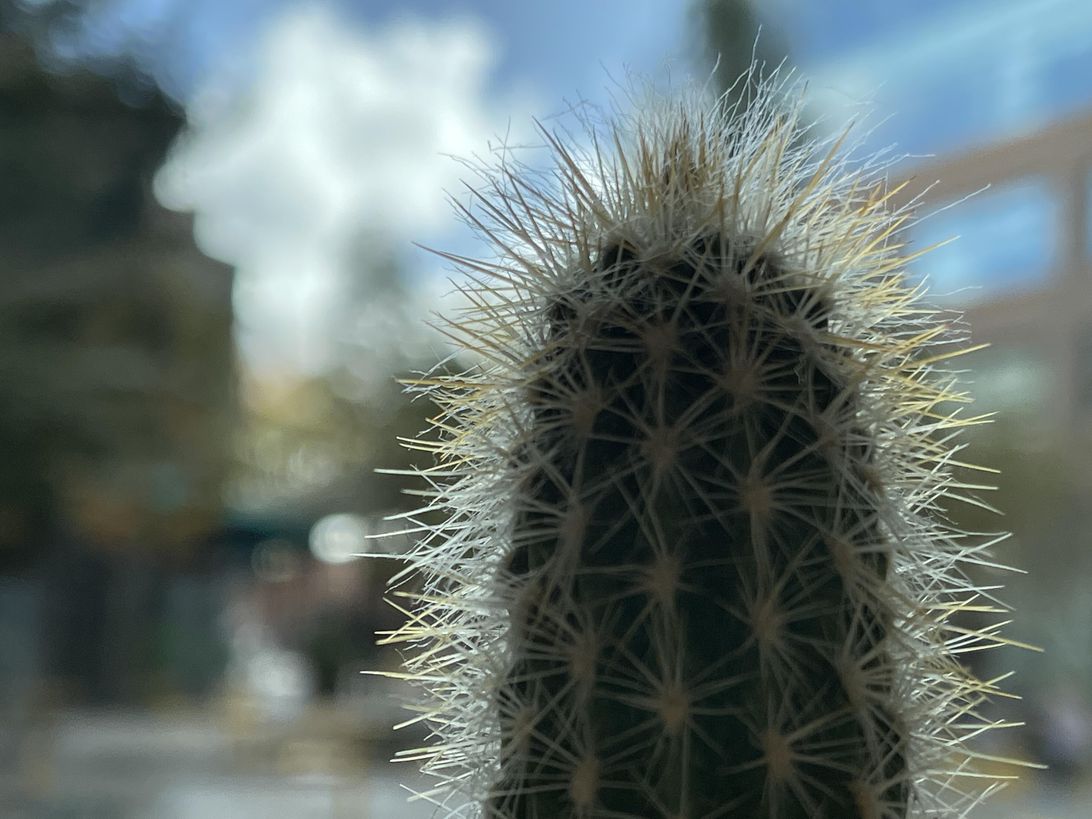
There is a lot happening here. I used the 2.5x optical zoom to take a backlit photo of this cactus. I like the way the light made the needles look. And the natural bokeh is creamy and soft.
Patrick Holland/CNET

These trees backlit by the sun really show the chops of the 12 Pro Max’s new wide-angle camera. It was able to capture the highlights on the trees without blowing them out to white. And there is minimal noise in the shadows.
Patrick Holland/CNET
If you’re on the fence between the 12 Pro and 12 Pro Max cameras, ask yourself if the additional size and heft of the Max is worth the benefits you gain in photography? For most people, they’re probably not and that’s largely because the 12 Pro also has a great all-around camera system. But for people like me, who want the best image quality out of a photo or video taken on a phone, then the 12 Pro Max is worth having in your pocket… if it fits.
One feature I’m excited about is Apple’s new ProRAW photo file, which provides the flexibility of a raw photo file but with the smarts of computational photography. Sadly, this feature doesn’t come out until later this year.
MagSafe, iOS 14 and the Apple Pencil
Like the rest of the iPhone 12 family, the 12 Pro Max can take advantage of Apple’s MagSafe charging and accessories. Thanks to magnets and NFC, the phone can get the most efficient wireless charge when attached to a MagSafe charger. When the phone and charger connect, there is a satisfying slap.
Apple also makes the MagSafe Duo Charger, which can charge a phone and an Apple Watch at the same time. It costs $129, and folds up into a handy travel size. And yes, that seems expensive for a charger even though it was cool to use. The Apple Watch charging portion can be angled up.
But why stop at cases and chargers? What if you could connect an Apple Pencil to an iPhone 12 Pro Max? Technically, thanks to those magnets, you can. But sticking it to the back of the phone is about as much use as you’ll get from it since the 12 Pro Max, like all iPhones, doesn’t support the Apple Pencil. If there was ever an iPhone to use an Apple Pencil on, it’s this one.
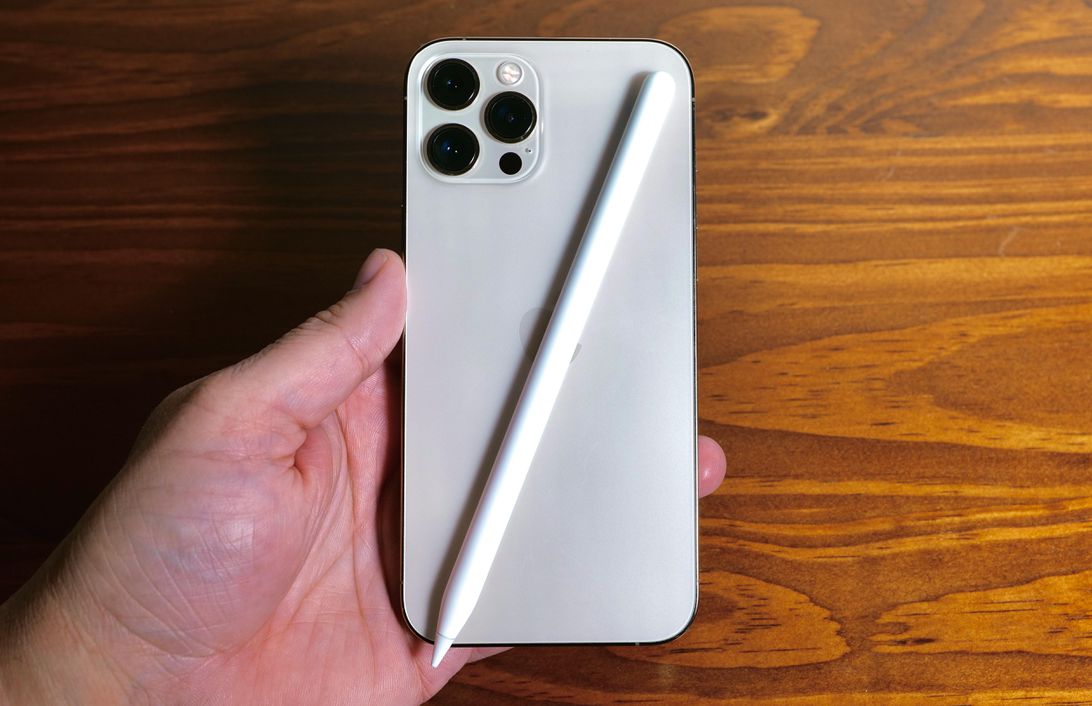
Patrick Holland/CNET
I wished Apple took more advantage of the 12 Pro Max’s 6.7-inch screen. iPadOS optimizes iOS for the larger screens of the iPad ($300 at Back Market) lineup. What about an “iOS Max” that would allow me to use iPad software features such as Split View on the 12 Pro Max? Or support the use of an Apple Pencil? An iOS that took full advantage of the Max’s size would be another benefit to set it apart from the other iPhones Apple sells. And, seriously, a MagSafe Apple Pencil would be a killer accessory.
The 12 Pro Max has big battery energy
The sleeper feature on the 12 Pro Max is its large battery. Apple doesn’t say how big the battery is, but during the week I had the phone, it made it through a day and a half without a problem. Over the weekend, it made it all the way through Friday, and by Saturday afternoon at 1:30 p.m. it still had 40% left.
I ran a battery test where the phone plays a looped video in airplane mode. Apple’s website says that the 12 Pro Max should last 20 hours doing this. In my test, it lasted 19 hours, 52 minutes. So basically as expected. We’ll be running more battery tests over the coming weeks, so bookmark this review for updates.
The iPhone 12 Pro Max is powered by the A14 Bionic chip. And it’s peppy and fast. The A14 chip is as much about giving you great performance now as it is about giving you great performance through years of iOS updates. In benchmark tests for performance the 12 Pro Max was on par with (not surprisingly) the iPhone 12, 12 Mini and 12 Pro. All of the new iPhones hold the distinction of having the most powerful processors in the phones we’ve tested.
iPhone 12 specs compared to iPhone 12 Mini, iPhone 12 Pro and iPhone 12 Pro Max
| Apple iPhone 12 | Apple iPhone 12 Mini | Apple iPhone 12 Pro | Apple iPhone 12 Pro Max | |
|---|---|---|---|---|
| Display size, resolution | 6.1-inch OLED; 2,532×1,170 pixels | 5.4-inch OLED; 2,340×1,080 pixels | 6.1-inch OLED; 2,532×1,170 pixels | 6.7-inch OLED; 2,778×1,284 pixels |
| Pixel density | 460ppi | 476ppi | 460ppi | 458ppi |
| Dimensions (inches) | 5.78×2.82×0.29 inches | 5.18×2.53×0.29 inches | 5.78×2.82×0.29 inches | 6.33×3.07×0.29 inches |
| Dimensions (millimeters) | 146.7×71.5×7.4mm | 131.5×64.2×7.4mm | 146.7×71.5×7.4mm | 160.8×78.1×7.4mm |
| Weight (ounces, grams) | 5.78 oz.; 164g | 4.76 oz.; 135g | 6.66 oz.; 189g | 8.03 oz.; 228g |
| Mobile software | iOS 14 | iOS 14 | iOS 14 | iOS 14 |
| Camera | 12-megapixel (wide), 12-megapixel (ultra-wide) | 12-megapixel (wide), 12-megapixel (ultra-wide) | 12-megapixel (wide), 12-megapixel (ultra-wide), 12-megapixel (telephoto) | 12-megapixel (wide), 12-megapixel (ultra-wide), 12-megapixel (telephoto) |
| Front-facing camera | 12-megapixel | 12-megapixel | 12-megapixel | 12-megapixel |
| Video capture | 4K | 4K | 4K | 4K |
| Processor | Apple A14 Bionic | Apple A14 Bionic | Apple A14 Bionic | Apple A14 Bionic |
| Storage | 64GB, 128GB, 256GB | 64GB, 128GB, 256GB | 128GB, 256GB, 512GB | 128GB, 256GB, 512GB |
| RAM | Undisclosed | Undisclosed | Undisclosed | Undisclosed |
| Expandable storage | No | No | No | No |
| Battery | Undisclosed; Apple lists 15 hours of video playback | Undisclosed; Apple lists 15 hours of video playback | Undisclosed; Apple lists 17 hours of video playback | Undisclosed; Apple lists 17 hours of video playback |
| Fingerprint sensor | No (Face ID) | No (Face ID) | No (Face ID) | No (Face ID) |
| Connector | Lightning | Lightning | Lightning | Lightning |
| Headphone jack | No | No | No | No |
| Special features | 5G enabled; MagSafe; water resistant (IP68); wireless charging; dual-SIM capabilities (nano-SIM and e-SIM) | 5G enabled; MagSafe; water resistant (IP68); wireless charging; dual-SIM capabilities (nano-SIM and e-SIM) | Lidar scanner; 5G enabled; MagSafe; water resistant (IP68); wireless charging; dual-SIM capabilities (nano-SIM and e-SIM) | Lidar scanner; 5G enabled; MagSafe; water resistant (IP68); wireless charging; dual-SIM capabilities (nano-SIM and e-SIM) |
| Price off-contract (USD) | $829 (64GB), $879 (128GB), $979 (256GB) | $729 (64GB), $779 (128GB), $879 (256GB) | $999 (128GB), $1,099 (256GB), $1,299 (512GB) | $1,099 (128GB), $1,199 (256GB), $1,399 (512GB) |
| Price (GBP) | £799 (64GB), £849 (128GB), £949 (256GB) | £699 (64GB), £749 (128GB), £849 (256GB) | £999 (128GB), £1,099 (256GB), £1,299 (512GB) | £1,099 (128GB), £1,199 (256GB), £1,399 (512GB) |
| Price (AUD) | AU$1,349 (64GB), AU$1,429 (128GB), AU$1,599 (256GB) | AU$1,199 (64GB), AU$1,279 (128GB), AU$1,449 (256GB) | AU$1,699 (128GB), AU$1,869 (256GB), AU$2,219 (512GB) | AU$1,849 (128GB), AU$2,019 (256GB), AU$2,369 (512GB) |
First published Nov. 9.

Devoted web advocate. Bacon scholar. Internet lover. Passionate twitteraholic. Unable to type with boxing gloves on. Lifelong beer fanatic.

